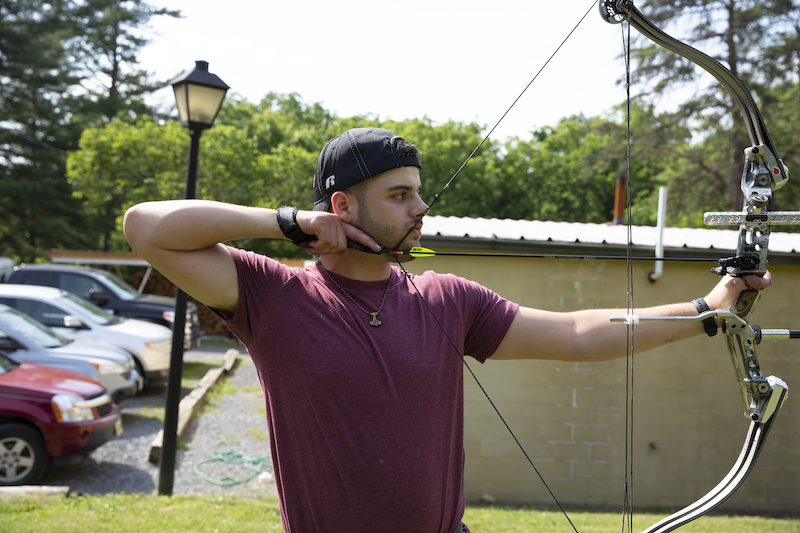The archery market is so flooded with release aids that it’s difficult to choose one to shoot. Archers scratch their heads while deciding between a hinge release, tension-activated release, handheld thumb trigger, or wrist strap/index finger trigger. Each style has pros and cons, so let’s look at all four.
Wrist Strap/Index Finger Release

Releases triggered with the index finger are popular with hunters, and readily available at box stores like Cabela’s and Bass Pro Shops. These caliper-style release aids are attached to a padded strap that wraps around the wrist. The archer activates the release by pulling a trigger, much like a gun.
A big advantage of these release aids is that the wrist strap holds most of the draw weight, leaving the index finger to relax and squeeze the trigger. These releases can be used even with gloves. Their drawback is that the trigger finger’s knuckle also serves as an anchor point on the archer’s face. Therefore, as the finger moves, the anchor can slightly shift. Archers are more accurate if they can independently move their trigger finger without moving their anchor.
Handheld Thumb Trigger
Archers hold this release with three or four fingers and activate it by pushing their thumb. High-level target archers prefer this release because their anchor point stays solid when their thumb triggers the release. That’s because the anchor—usually between the index and middle knuckles—is independent of the thumb movement.
Archers like this release because it provides “command” of each shot, letting them execute the shot when they want. But because archers tend to learn exactly when their shot will break, they can start anticipating the shot and develop target panic.
Hinge Release

This handheld release is most popular with target and 3D archers. It’s held much like a thumb trigger release, except it’s activated by rotating the entire release aid instead of “pushing the button.”
Target and 3D archers like that feature because they’re “surprised” when the shot breaks. Patience is the key to shooting a hinge release. To properly shoot it, archers must keep their sight aimed at the middle while pushing and pulling. That constant pressure eventually rotates the release so the hinge activates and unleashes the arrow. That surprise is the release’s greatest benefit, but it can also frustrate archers who get impatient waiting for the shot to go off. That uncertainty tends to make them “punch” the shot.
Tension-Activated Release
Tension-activated releases work much like a hinge release, except the mechanism that releases the hook doesn’t rely on rotation. Instead, it relies on the weight to increase as the archer pulls into the back wall of the bow’s cams. The advantage is the surprising nature of how it shoots the arrow, which is much like the hinge release. The mechanism that activates the release, however, can be tedious to set up unless you’re experienced with these devices.
As you search for a release, your goal is to choose a reliable and comfortable device that you enjoy shooting. It must fit your hand perfectly to deliver peak results. If you can’t decide, consider a release aid that can be activated several ways, such as the T.R.U. Ball Goat or the older HBX. You can convert these release aids from a thumb trigger to a hinge release with a few adjustments.
When you settle on a release, there’s one thing left to do: Practice, practice, practice!



